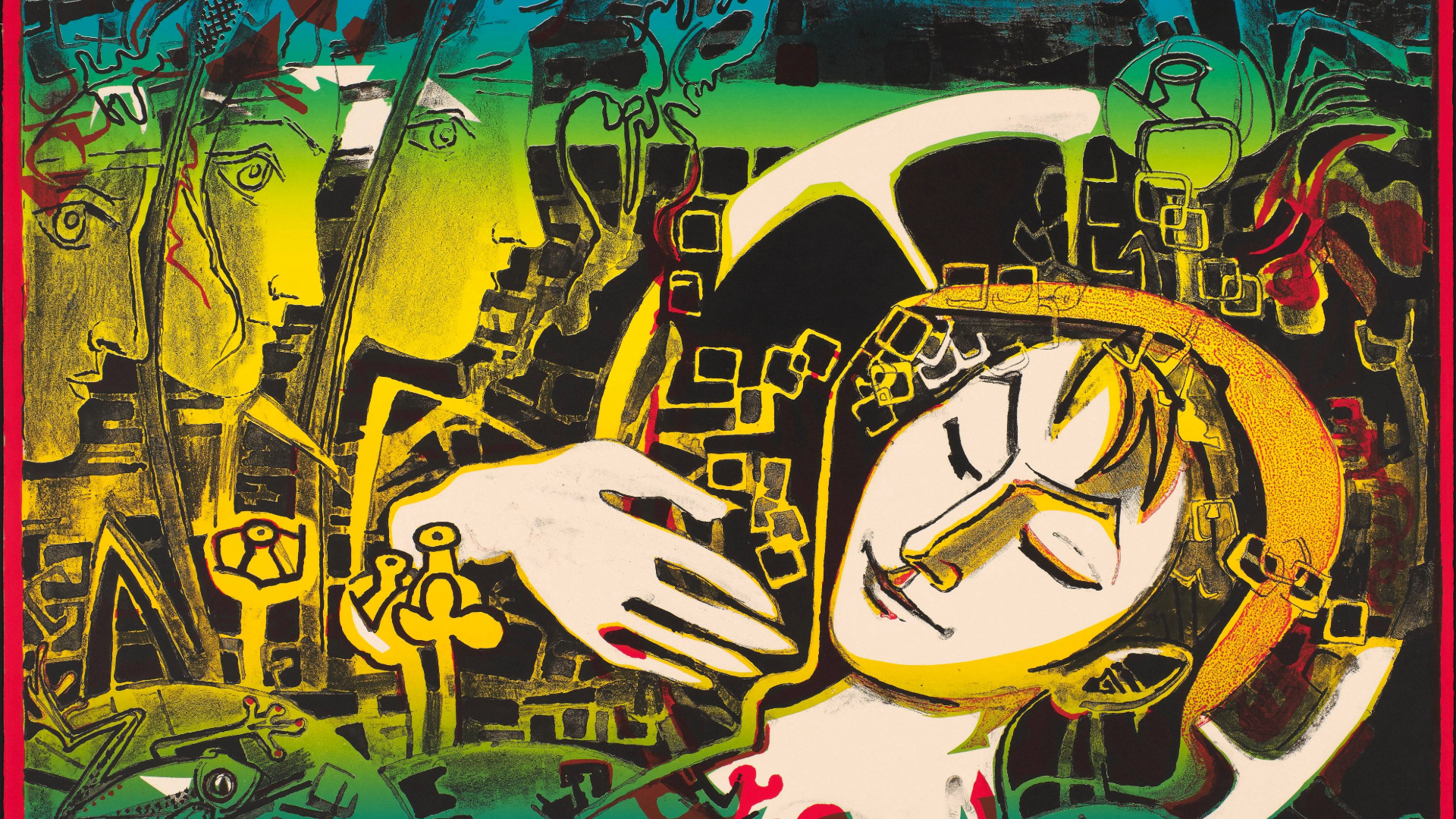Move to the United States
By 1965, Gilot had built a successful career, spending most of her time in Paris and London and three months out of the year in the United States. She continued making lithographs at Mourlot Atelier in Paris, and the Tate Gallery had helped her secure her own studio in London. She was so passionate about her work that she occasionally went seventy-two hours without needing sleep.
Her visits to the United States in the late 1960s included lectures and exhibitions throughout the Midwest, particularly in Michigan. She befriended many American artists and collectors in those years, including Philip and Muriel Berman, who first commissioned her lithographs in 1967.
In 1969, Gilot was working at the Tamarind Institute when she decided to visit a friend in La Jolla, California. There, she met Dr. Jonas Salk, pioneer of the polio vaccine. When the two married in 1970, Gilot split her time between California and Paris, where she continued to make lithographs at Mourlot Atelier.
Gilot quickly adjusted to the United States as her new home. In 1973, she was appointed Art Director of Virginia Woolf Quarterly magazine, and she held that position until 1977. She served as Chairperson at the Department of Fine Arts at the University of Southern California, the Isomata Program, from 1976 to 1983 and taught summer courses at the university’s Idyllwild campus. Her exhibitions in the 1970s were primarily in the United States; she exhibited in California, New York, Florida, Michigan, Texas, and New Mexico. In 1980, she was granted dual citizenship.





